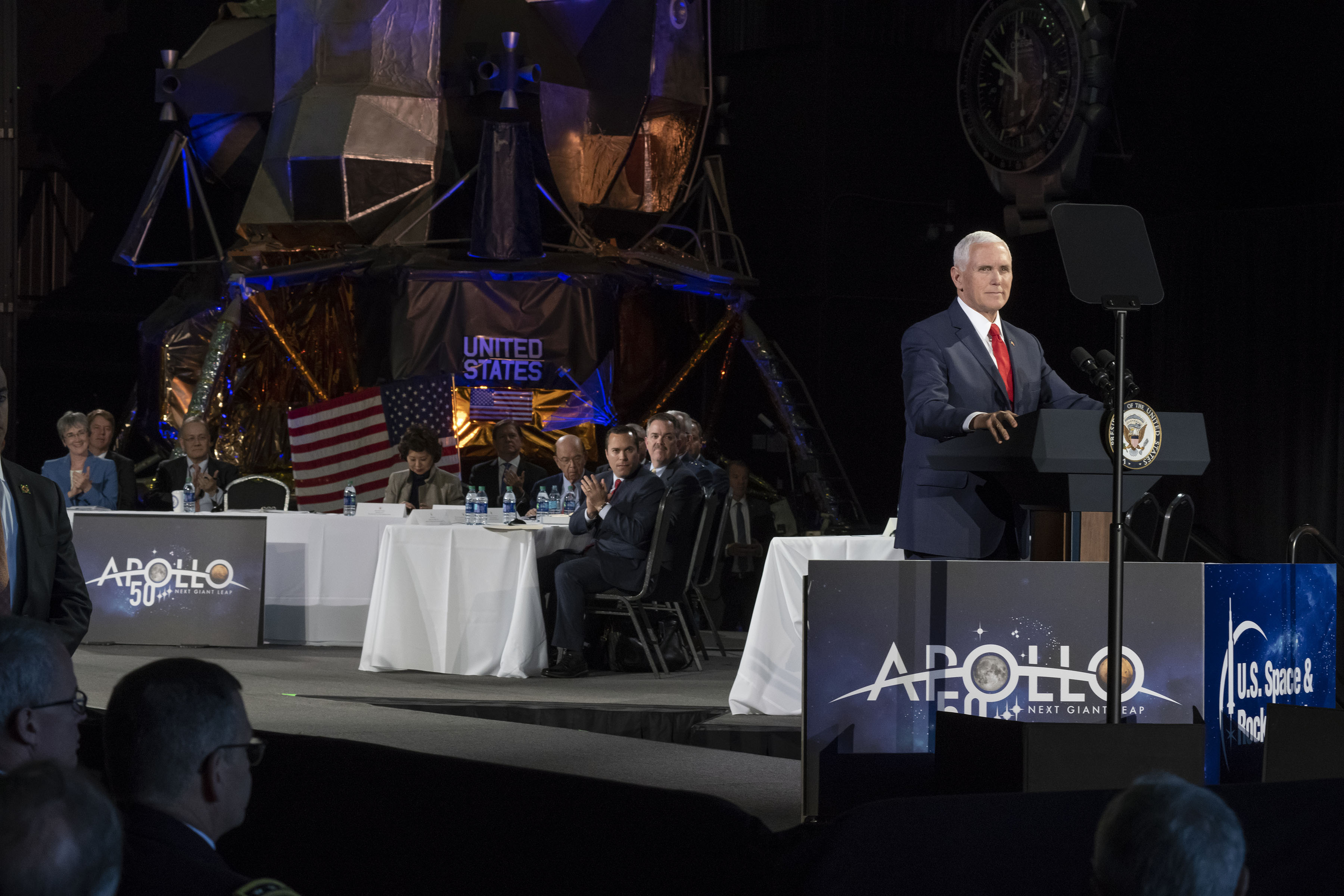NASA Chief Vows Quick Action to Return Astronauts to the Moon by 2024
NASA's chief says the agency is all set to meet a new challenge — returning humans to land on the moon within the next five years.
NASA Administrator Jim Bridenstine promised Tuesday (March 26) that the agency will work quickly to send a crew to the lunar vicinity in 2022 and land astronauts on the moon's south pole by 2024.
Bridenstine's declaration came after U.S. Vice President Mike Pence, who chaired the fifth meeting of the National Space Council Tuesday, announced a goal to land astronauts on the moon in the next five years.
Related: NASA May Use Private Booster Instead of SLS for Orion Moon Trip

"It is the right time for this challenge, and I assured the vice president that we, the people of NASA, are up to the challenge," Bridenstine said in a NASA statement. "We will take action in the days and weeks ahead to accomplish these goals. We have laid out a clear plan for NASA's exploration campaign that cuts across three strategic areas: low-Earth orbit, the Moon, and Mars and deeper into space."
Bridenstine said he has already made reorganizations at NASA to meet the new goal, including establishing a moon to Mars directorate "to focus on the formulation and execution of exploration development activities."
Reaching the goal will depend heavily on NASA's monster Space Launch System (SLS) rocket, which hasn't even flown in space yet. The first uncrewed launch date, called Exploration Mission-1, is scheduled for sometime in 2020. The first crewed mission, which will go to "the lunar vicinity," will be in 2022. Both launches will use the Orion spacecraft, NASA's capsule for deep-space exploration.
Get the Space.com Newsletter
Breaking space news, the latest updates on rocket launches, skywatching events and more!
Bridenstine discussed SLS, as well as possible commercial options, with personnel at NASA's Marshall Space Flight Center, which is testing out SLS components, according to the statement.
"I shared the analysis we conducted to assess flying the Orion on different commercial options," Bridenstine said. "While some of these alternative vehicles could work, none was capable of achieving our goals to orbit around the moon for Exploration Mission-1 within our timeline and on budget."
"The results of this two-week study reaffirmed our commitment to the SLS," he added. "More details will be released in the future."
Bridenstine pledged that the agency will use "creative approaches to advance SLS manufacturing and testing to ensure Exploration Mission-1 launches in 2020," while making sure that the rocket is safe and reliable.
The announcement comes in the 50th year after humans first landed on the moon, in 1969. NASA sent 12 astronauts to the lunar surface between 1969 and 1972 as a part of the Apollo program, and nobody has returned to the moon since (despite several other U.S. presidents trying to send missions afterward). Some Apollo astronauts are still living today, including Buzz Aldrin, who was on the first moon landing in 1969 with Neil Armstrong, who died in 2012.
President Trump is up for re-election in 2020. If Trump is re-elected, his second and final term concludes in 2024 — the same year that NASA is supposed to land astronauts on the moon.
- NASA's Moonwalking Apollo Astronauts: Then and Now
- Presidential Visions for Space Exploration: From Ike to Trump
- NASA's Exploration Mission 1: A Step-by-Step Return to the Moon in Pictures
Follow Elizabeth Howell on Twitter @howellspace. Follow us on Twitter @Spacedotcom and on Facebook.
Join our Space Forums to keep talking space on the latest missions, night sky and more! And if you have a news tip, correction or comment, let us know at: community@space.com.

Elizabeth Howell (she/her), Ph.D., was a staff writer in the spaceflight channel between 2022 and 2024 specializing in Canadian space news. She was contributing writer for Space.com for 10 years from 2012 to 2024. Elizabeth's reporting includes multiple exclusives with the White House, leading world coverage about a lost-and-found space tomato on the International Space Station, witnessing five human spaceflight launches on two continents, flying parabolic, working inside a spacesuit, and participating in a simulated Mars mission. Her latest book, "Why Am I Taller?" (ECW Press, 2022) is co-written with astronaut Dave Williams.
